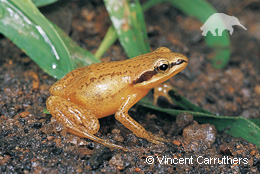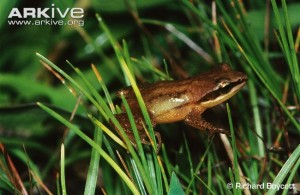 “Study nature. Love nature. Stay close to nature. It will never fail you.” I think that pretty much sums up my approach to life. I aspire to play a role in protecting and conserving our natural world and that is why I wanted to become an EDGE Fellow.
“Study nature. Love nature. Stay close to nature. It will never fail you.” I think that pretty much sums up my approach to life. I aspire to play a role in protecting and conserving our natural world and that is why I wanted to become an EDGE Fellow.
I am lucky to live in a beautiful country with loads of biodiversity and wildlife all around me. I was raised in a family of nature lovers and childhood holidays consisted of visiting game reserves and spending time outdoors. But before I ended on the path to becoming a Conservation Biologist I spent the first 7 years of my career in the publishing and advertising industries. After a few too many painful deadlines and getting fed-up with the consumerism around me, I realised I was destined for something else. With no scientific background but armed with a will to make a difference, and a very understanding husband, I embarked on a new journey along the path of discovery and fascination of our natural world.

So 5 years later, here I am, enrolled in a postgraduate degree at the Northwest University in South Africa and I work full time as a producer of wildlife documentaries at Earth Touch. It’s been a tough ride with blood, sweat and tears, but I feel like it’s paying off. Having the opportunity of an ZSL EDGE Fellowship and the backing of the professionals associated with the programme, is an indicator to me that I can make a difference. And better yet, I get to learn just how to do it with the experience I gain through my fellowship.
My project is titled, “No croaking! Saving South Africa’s endangered Mistbelt Chirping Frog”. Anhydrophryne ngongoniensis is a small direct-developing pyxicephalid of less than 3cm long, with a highly localised distribution and is endemic to south-eastern South Africa. The frog only occurs in 9km2 and is currently listed as Endangered by IUCN and is 100th on the EDGE Amphibian list.

The main aims of the project are to 1) gain updated knowledge of species numbers and distribution at key sites where the species occurs,2) provide reviewed and improved land management recommendations, 3) increase conservation action for the species among local communities (feeding into provincial monitoring/conservation of threatened amphibians), 4) build awareness among the public, schools and communities of the importance of the local species and their habitat as well as biodiversity and frogs in general and 5) secure official protection of key habitat/areas within the species range.
The project is part of Endangered Wildlife Trust‘s Threatened Amphibian programme and will be completed in fulfillment of my MSc degree in Zoology. I’m excited to start my project and contribute to the conservation of threatened biodiversity in South Africa.